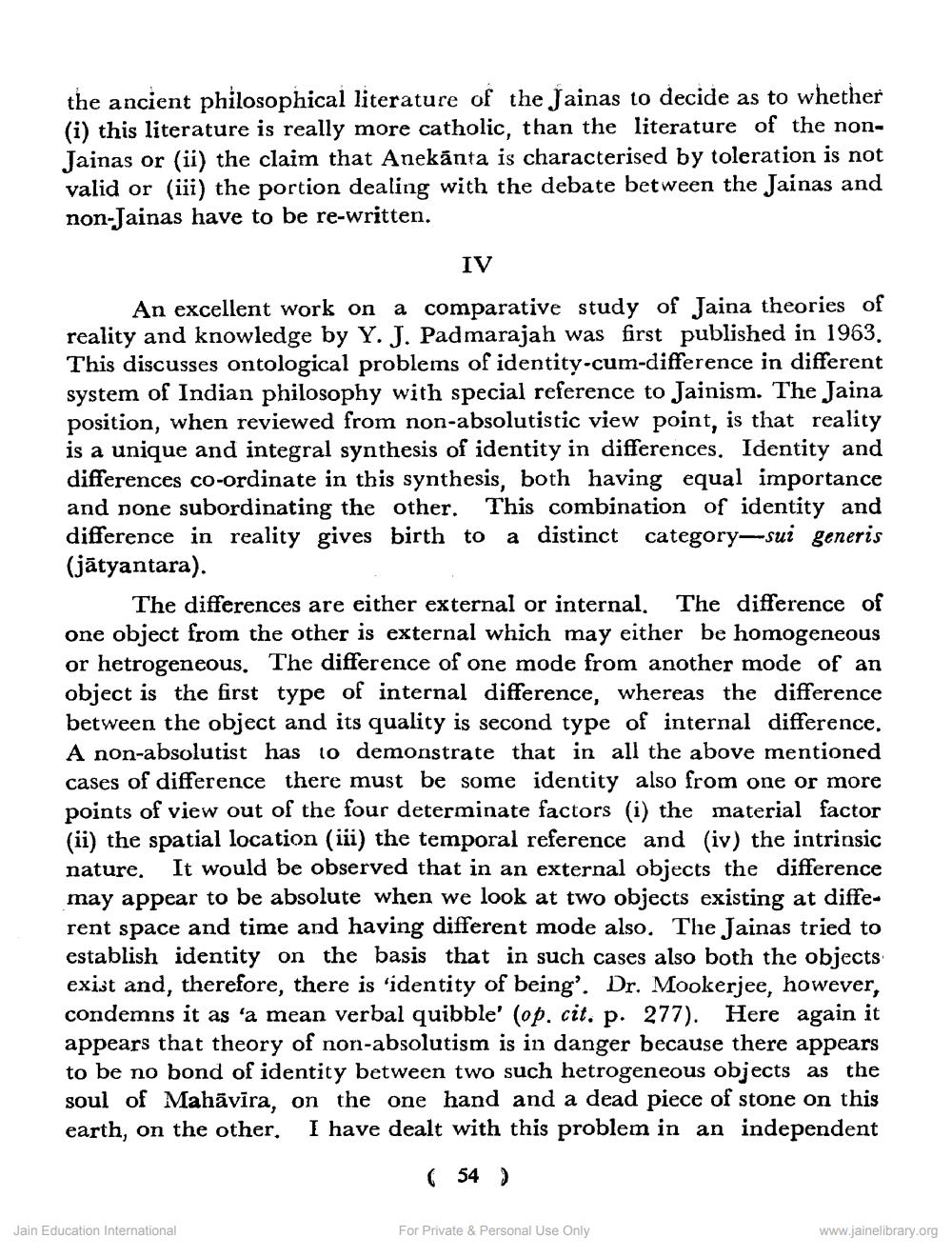________________
the ancient philosophical literature of the Jainas to decide as to whether (i) this literature is really more catholic, than the literature of the nonJainas or (ii) the claim that Anekānta is characterised by toleration is not valid or (iii) the portion dealing with the debate between the Jainas and non-Jainas have to be re-written.
IV
An excellent work on a comparative study of Jaina theories of reality and knowledge by Y. J. Padmarajah was first published in 1963. This discusses ontological problems of identity-cum-difference in different system of Indian philosophy with special reference to Jainism. The Jaina position, when reviewed from non-absolutistic view point, is that reality is a unique and integral synthesis of identity in differences. Identity and differences co-ordinate in this synthesis, both having equal importance and none subordinating the other. This combination of identity and difference in reality gives birth to a distinct category-sui generis (jātyantara).
The differences are either external or internal. The difference of one object from the other is external which may either be homogeneous or hetrogeneous. The difference of one mode from another mode of an object is the first type of internal difference, whereas the difference between the object and its quality is second type of internal difference. A non-absolutist has to demonstrate that in all the above mentioned cases of difference there must be some identity also from one or more points of view out of the four determinate factors (i) the material factor (ii) the spatial location (iii) the temporal reference and (iv) the intrinsic nature. It would be observed that in an external objects the difference may appear to be absolute when we look at two objects existing at different space and time and having different mode also. The Jainas tried to establish identity on the basis that in such cases also both the objects exist and, therefore, there is 'identity of being'. Dr. Mookerjee, however, condemns it as 'a mean verbal quibble' (op. cit. p. 277). Here again it appears that theory of non-absolutism is in danger because there appears to be no bond of identity between two such hetrogeneous objects as the soul of Mahāvīra, on the one hand and a dead piece of stone on this earth, on the other. I have dealt with this problem in an independent
(54)
Jain Education International
For Private & Personal Use Only
www.jainelibrary.org




